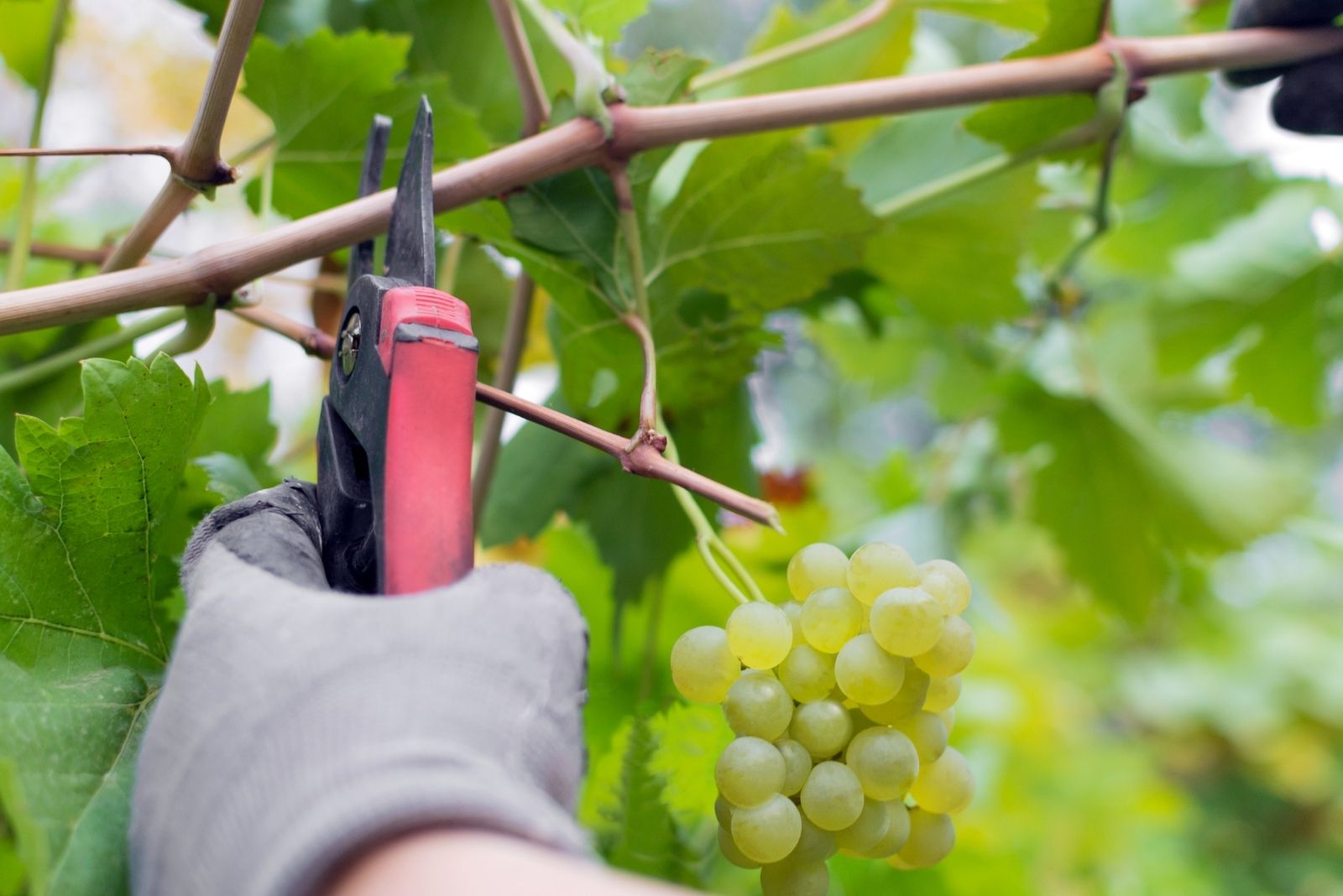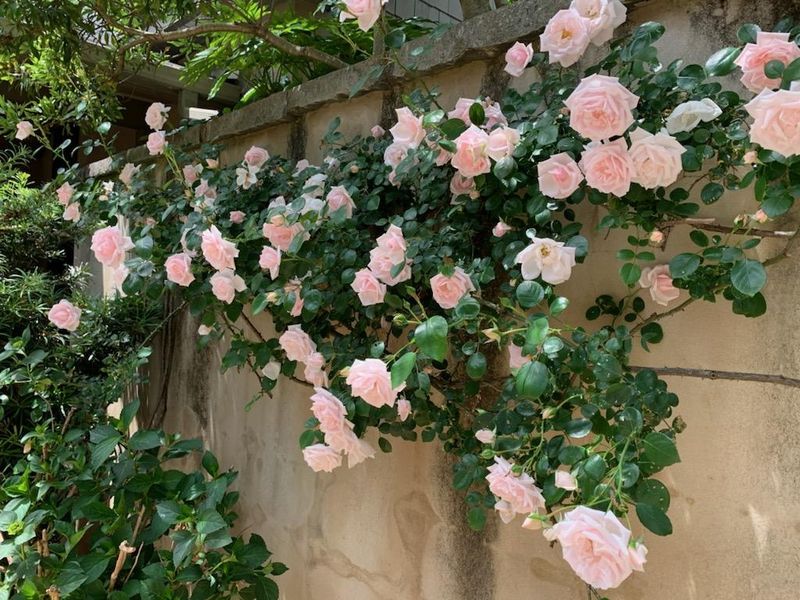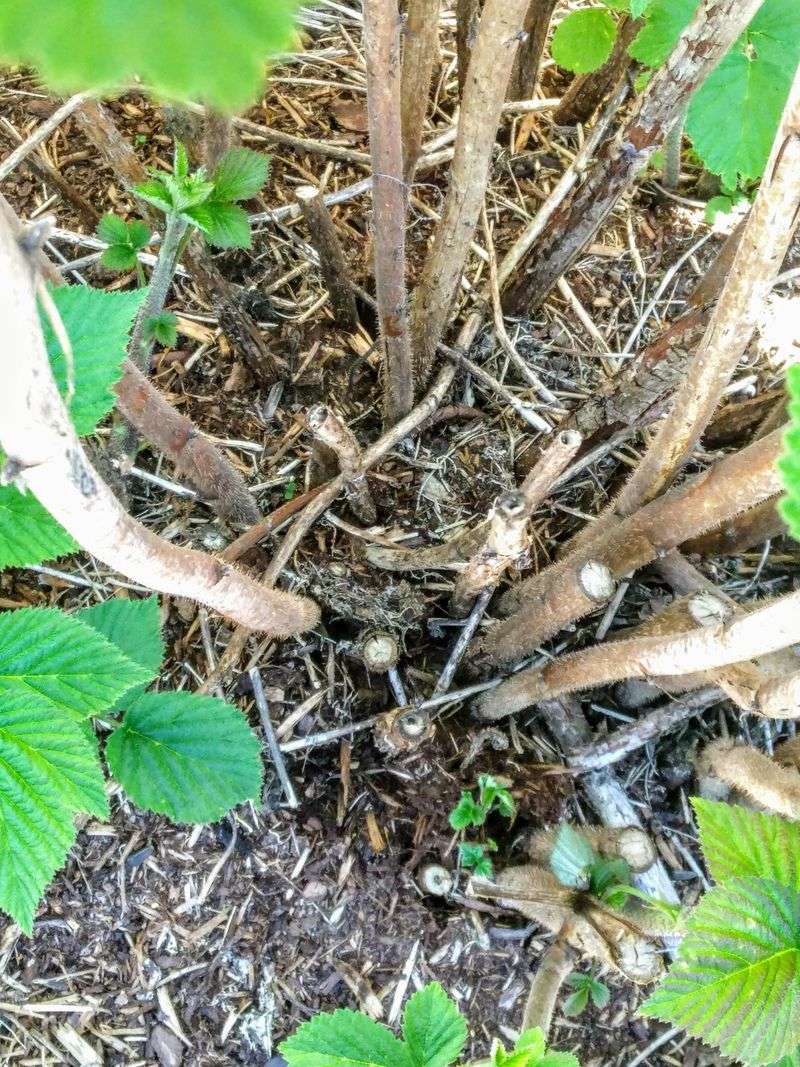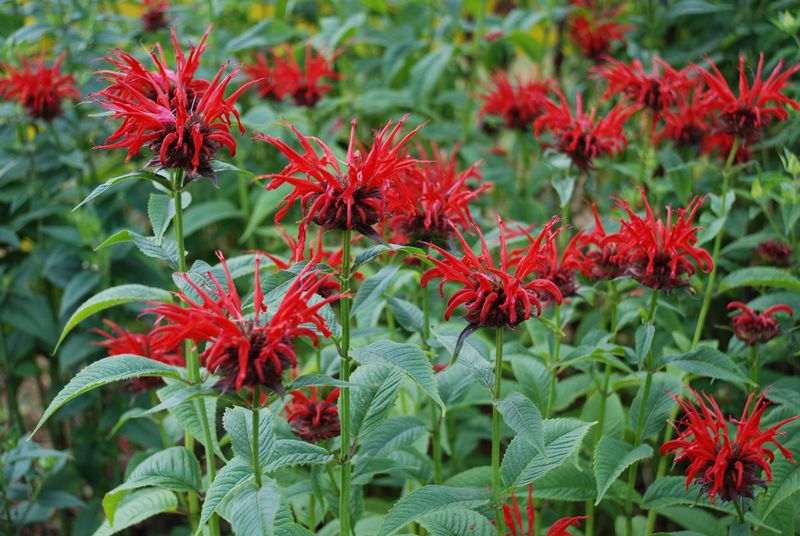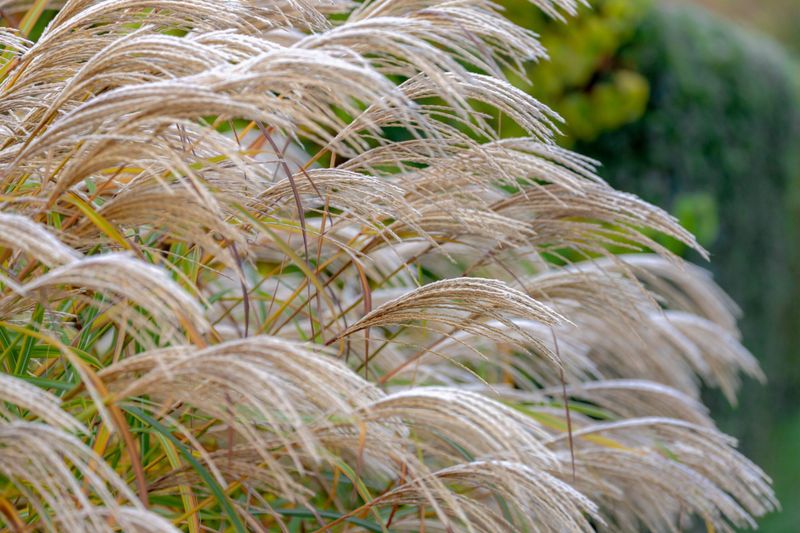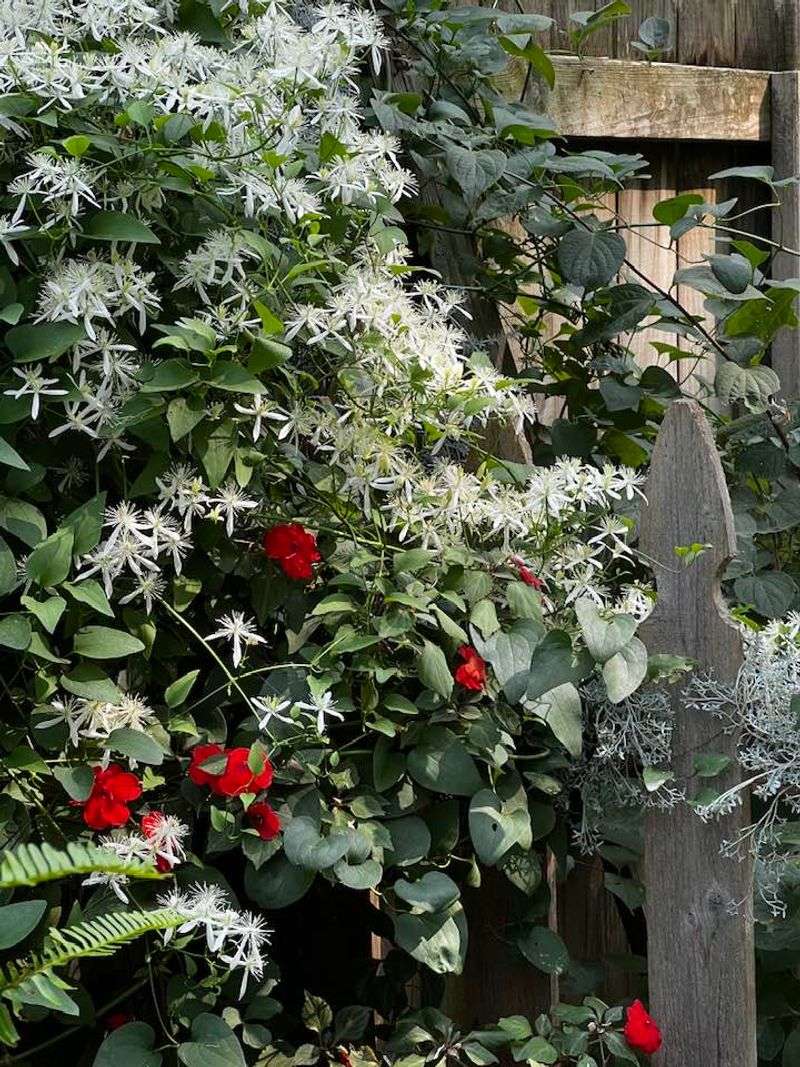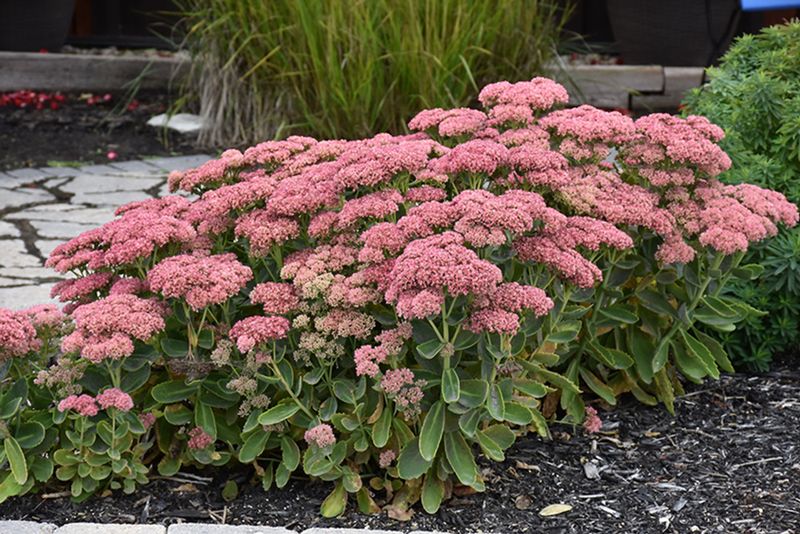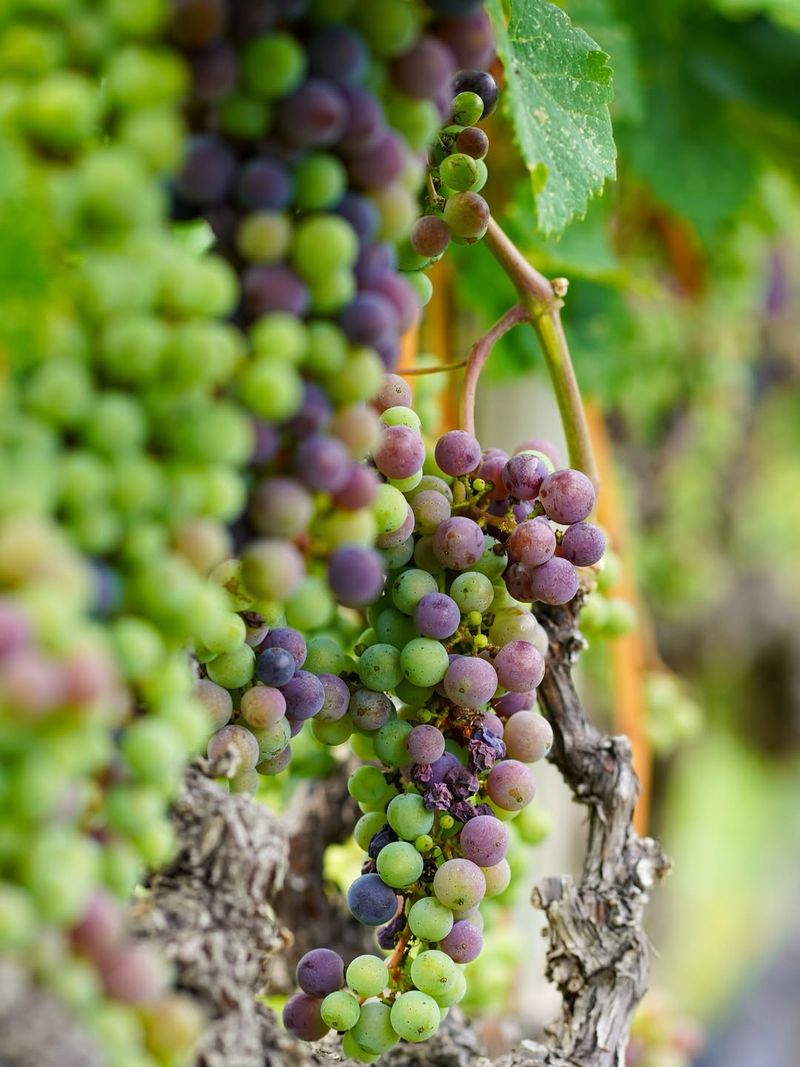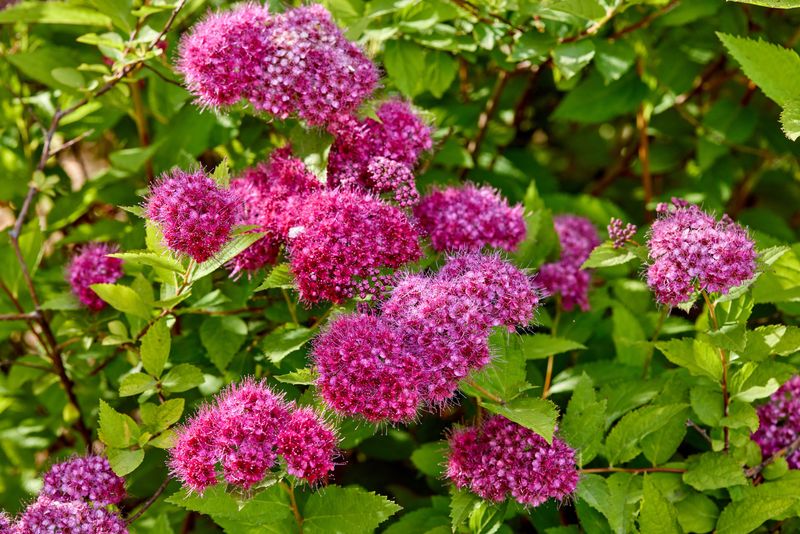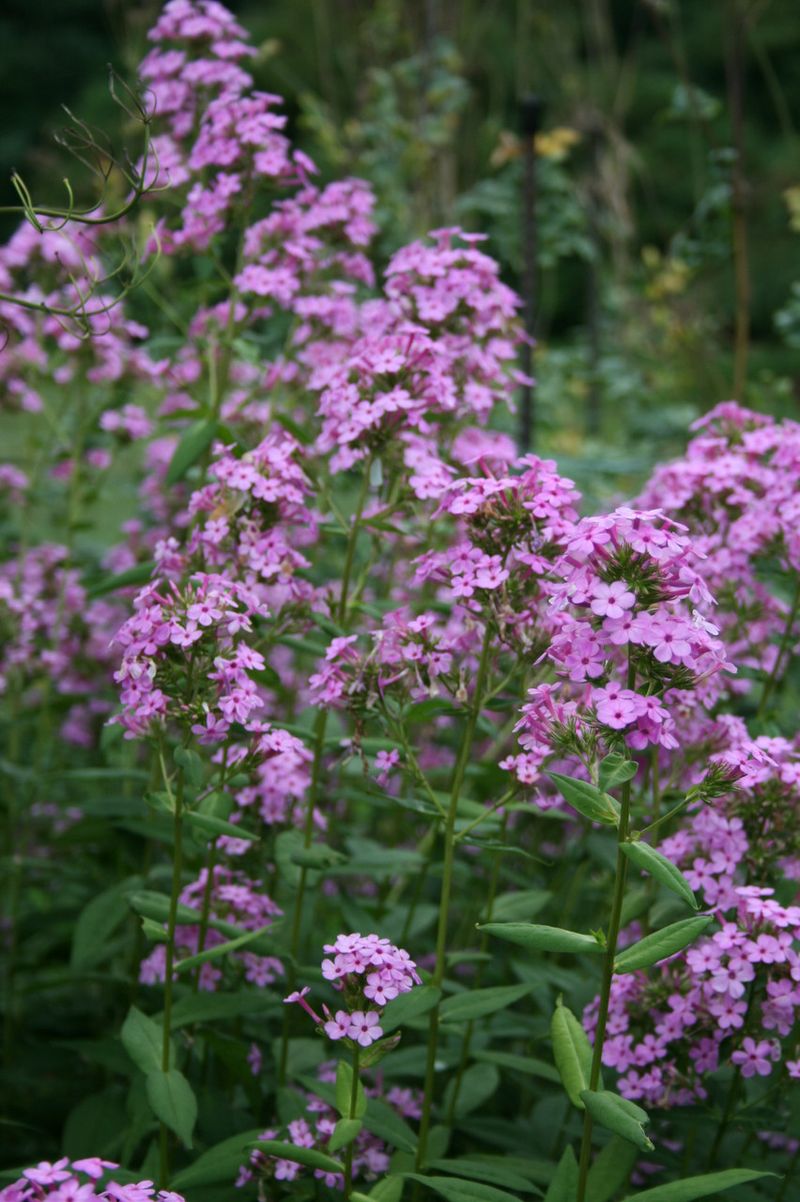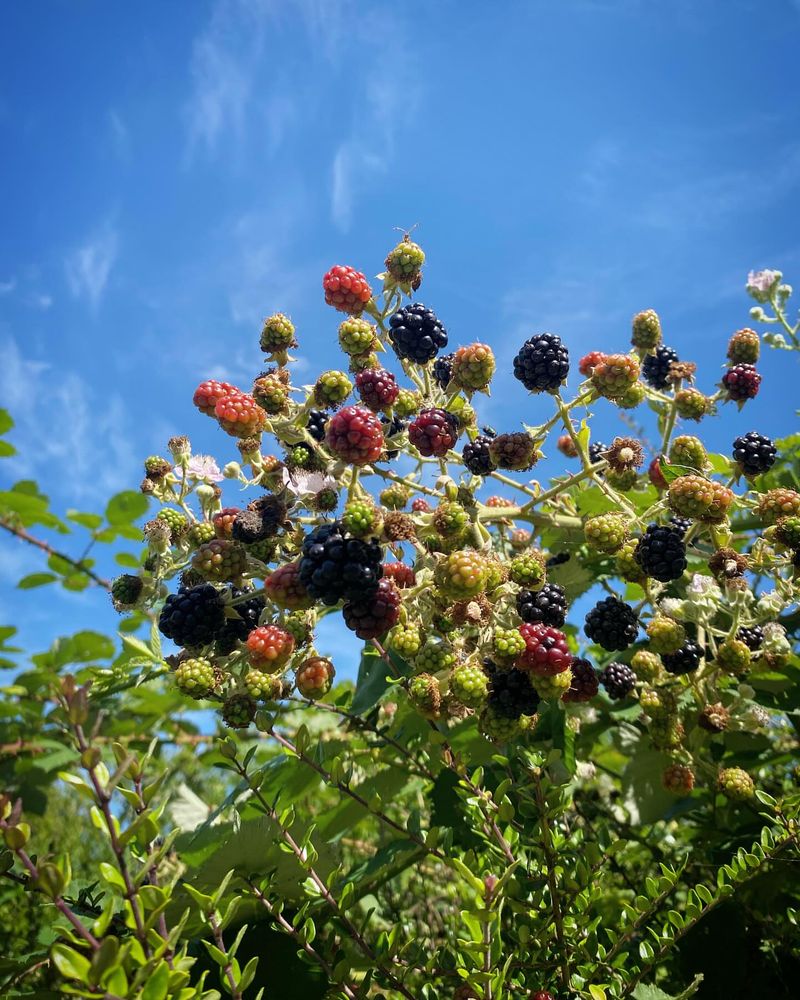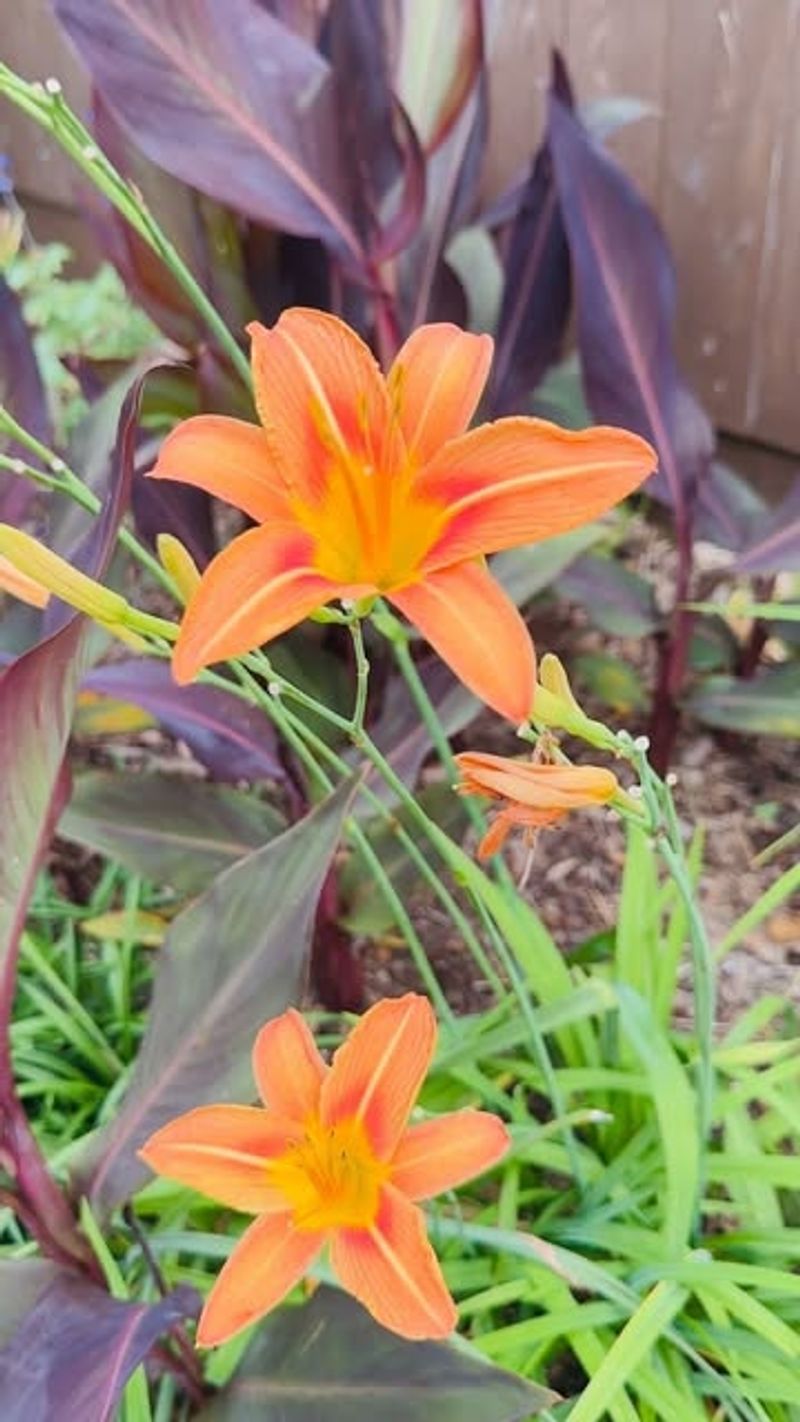October marks a turning point in Minnesota gardens. As temperatures drop and plants prepare for winter dormancy, smart pruning decisions can set the stage for healthier growth come spring.
For me, pruning certain plants in my Minnesota backyard every October has always made a noticeable difference in spring growth. Knowing which plants benefit from fall trimming helps gardeners work with nature’s rhythm rather than against it.
1. Climbing Roses
Fall cleanup in Minnesota gardens often begins with these beautiful bloomers. Removing dead canes and trimming back long stems before winter prevents snow damage and disease spread.
Use sharp bypass pruners to cut canes at a 45-degree angle, removing any wood thinner than a pencil. Focus on eliminating crossing branches that could rub and create wounds during harsh winter winds.
My neighbor noticed fewer black spot issues after starting October pruning. The practice also makes spring maintenance much easier when new growth emerges.
2. Raspberry Canes
Summer-bearing varieties need attention once harvest ends. Cutting out old fruiting canes creates space for next year’s producers and reduces overwintering pests.
Identify brown, woody canes that already produced berries and remove them at ground level. Leave green first-year canes standing, as these will bear fruit next summer. Sanitize tools between cuts to prevent disease transmission.
A local gardener told me her raspberry yields doubled after implementing consistent fall pruning. The improved air circulation also meant healthier plants overall.
3. Bee Balm
Powdery mildew often plagues this perennial by season’s end. Cutting back affected foliage prevents spores from overwintering in your garden beds.
Trim stems to about three inches above the soil line after the first hard frost. Dispose of diseased material in the trash rather than compost. Consider dividing crowded clumps every three years to improve vigor and reduce disease pressure.
Since I started October trimming, my bee balm returns stronger each spring. The hummingbirds and butterflies seem to appreciate the healthier blooms too.
4. Ornamental Grasses
Prairie dropseed, little bluestem, and switchgrass all benefit from late-season attention. Though many gardeners wait until spring, October trimming works well for certain varieties prone to lodging under heavy snow.
Bundle stems together and cut six inches above the crown using hedge shears. Leave shorter grasses like blue fescue standing for winter interest and crown protection during temperature swings.
One garden club member mentioned she prunes half in fall and half in spring. This strategy provides both winter structure and easier spring cleanup.
5. Clematis Vines
Group classification determines pruning timing for these flowering climbers. Late-blooming varieties that flower on new wood respond well to October trimming in Minnesota’s climate.
Cut sweet autumn clematis and other Group 3 types back to 12-18 inches above ground. Avoid pruning spring bloomers now, as you’ll sacrifice next year’s flowers. Mark plants with tags to remember their group.
After years of confusion, I finally labeled mine. The difference in bloom quantity was remarkable once I matched pruning time to each vine’s needs.
6. Sedum
Autumn Joy and other upright sedums develop attractive seed heads that many gardeners leave standing. However, cutting them back prevents self-seeding and reduces spring cleanup.
Wait until after several hard frosts when foliage turns completely brown. Snip stems to two inches above soil level, leaving enough to mark the plant’s location. Toss healthy trimmings in the compost pile.
From my experience in Minnesota gardens, carefully pruning these plants each October ensures stronger, healthier growth. The compact spring emergence looks tidier too.
7. Grapevines
Concord and other cold-hardy varieties grown in Minnesota benefit from preliminary fall pruning. Removing excess growth now simplifies the more detailed dormant pruning done in late winter.
Cut back long, unproductive shoots and any diseased wood. Save major structural pruning for February or March when sap flow has stopped. Proper timing prevents excessive bleeding that weakens vines.
A vineyard owner once shared that October trimming helps him assess vine health before snowfall. It’s become part of his annual preparation routine.
8. Spirea Shrubs
Summer-blooming spireas like Goldflame and Anthony Waterer flower on current season’s wood. Light October shaping maintains compact form without sacrificing next year’s blooms.
Remove spent flower clusters and trim wayward branches to maintain the shrub’s natural rounded shape. Avoid heavy pruning now; save major renovation cuts for early spring. Sterilize pruners between shrubs to prevent disease spread.
My spirea hedge looks much neater after fall touchups. The plants also seem to leaf out more uniformly when spring arrives.
9. Phlox
Garden phlox often develops powdery mildew by October, making fall cleanup essential. Removing infected foliage breaks the disease cycle and protects neighboring plants.
Cut stems to ground level once frost kills the foliage. Bag and dispose of diseased material rather than composting it. Thin crowded clumps in spring to improve air circulation and reduce future mildew problems.
Since implementing October removal, my phlox beds stay healthier. The spring growth emerges clean and the summer blooms last longer without disease stress.
10. Blackberry Bushes
Similar to raspberries, these brambles need old canes removed after fruiting finishes. October pruning reduces pest habitat and prevents disease carryover into next season.
Cut brown floricanes that produced berries this year down to soil level. Keep green primocanes that will fruit next summer. Wear thick gloves and long sleeves to protect against thorns during this task.
A friend mentioned her blackberry patch became more manageable after establishing a fall pruning routine. The increased yields made the effort worthwhile.
11. Daylilies
Though not strictly necessary, trimming back spent foliage improves garden appearance and reduces slug hiding spots. October cleanup also prevents fungal diseases from overwintering on dead leaves.
Cut foliage to six inches above the crown after frost blackens the leaves. Remove any seed pods unless you’re collecting seeds for propagation. Mulch crowns lightly after the ground freezes for winter protection.
From my experience in Minnesota gardens, carefully pruning these plants each October ensures stronger, healthier growth and a more rewarding spring garden.

